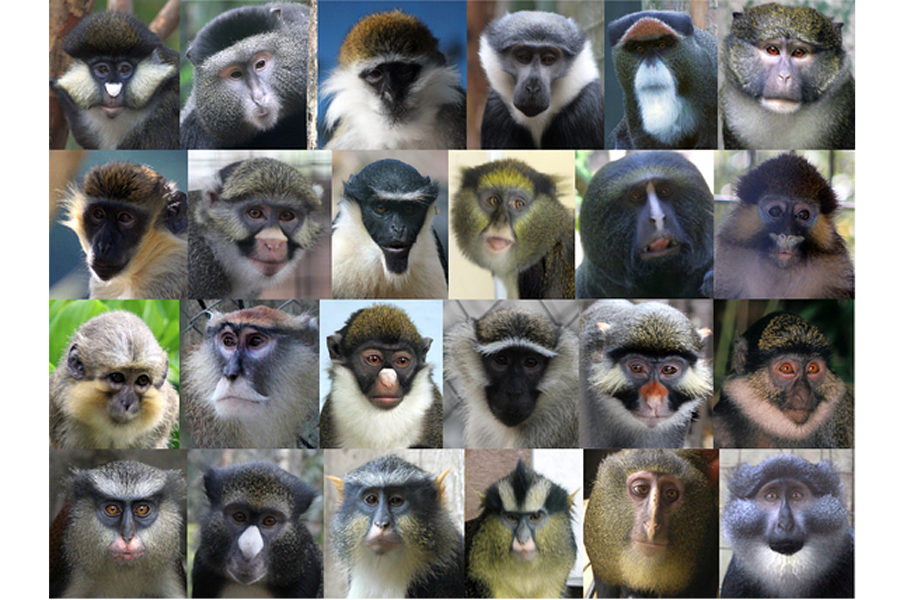Monkeys evolved distinct faces to prevent interbreeding, say scientists
Loading...
With bushy beards and funky blue, yellow or brown faces, guenon monkeys have some of the most colorful and quirky faces of all primates. A close study of more than 20 guenon monkey species reveals these sociable animals may rely on their distinctive patterns to prevent interbreeding.
"Animals use coloration and patterning for a whole host of different reasons, and we think guenons are using their patterns to recognize different species," said study lead author William Allen, of the University of Hull in the United Kingdom.
Guenon monkeys live in the forests of Central and West Africa, eating mostly fruits, insects and leaves. Sometimes called cheek pouch monkeys, most guenons are the size of cats and dogs, and they forage in large groups of two or more different species. Each species has unique chirps, sneezes and whistles, but the monkeys learn other species' warning calls like a foreign language, providing protection for all groups. [Photos: Adorable Guenon Monkey Faces]
There are as many as 35 guenon monkey species, and spending so much time with other friendly monkeys means running the risk of interbreeding. If guenons mate across species, their offspring might be infertile or less healthy, similar to when donkeys and horses breed, Allen said. Guenons can interbreed in zoos, but rarely do so in the wild.
For decades, many researchers have thought that guenons' unusual fur and facial features were meant to send "I'm different" signals to other monkeys. However, while there are many examples of wild creatures signaling with skin patterns and colors, such as the bright red patch on the abdomens of black widow spiders, scientists have had little success actually proving these patterns are a means of species-wide communication in the guenons, Allen said.
To show that the these monkeys speak to each other with their stylish fur, Allen relied on facial recognition software. He photographed more than 150 guenons, both wild monkeys living in Africa and individuals in zoos and preserves. Then, he analyzed how facial patterns differed among monkeys within a guenon species, as well as how the patterns differed among species. Allen said he thinks the software algorithm recognizes facial features in a manner similar to how the guenon monkeys do it.
It turns out the facial patterns are remarkably similar within a guenon monkey species. That is, all guenon monkeys are alike if they are the same species. But each different species has developed its own dramatic flair, whether it's a furry white nose, a ruffly black mohawk or pursed pink lips.
The new findings were published today (June 26) in the journal Nature Communications.
The researchers suspect that the close living style of the guenon species, combined with repeated expansion and contraction of the monkeys' forest habitat, drove the development of their incredible facial diversity. For example, isolated groups living in far-flung forests were squeezed together when their habitat shrunk, forcing them to live with different species, Allen said.
"Where species came into contact with each other, they developed visual signals so they didn't get confused with each other," he said.
Researchers studying primates in South America have discovered a similar pattern, with more-complex facial features among primates who need to quickly recognize members of their own species.
Email Becky Oskin or follow her @beckyoskin. Follow us @livescience, Facebook & Google+. Original article on Live Science.
- Image Gallery: Evolution's Most Extreme Mammals
- 8 Humanlike Behaviors of Primates
- 51 Sultry Facts About Sex
Copyright 2014 LiveScience, a TechMediaNetwork company. All rights reserved. This material may not be published, broadcast, rewritten or redistributed.





